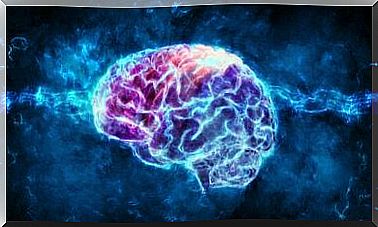The Language Of Depression: When Anxiety Has Voice And Expression

The language of depression has a voice and controls us. The anguish, the apathy, the hopelessness… All these feelings permeate the words we choose, alter our lexicon, deform our grammatical patterns and even the length of the sentences we pronounce. Everything is briefer, more obscure and marked by that deep bitterness that completely blurs the watercolor of our reality.
Depression gives clues and enters through the windows of our house in many different ways. However, its main skill and fierce ruse is to deform everything: our behavior, our motivation, our habits of life, our thoughts, our language…
On some occasions, far from reacting to all this, we end up giving up and assuming its presence, integrating it as a part of our being.
We say this for a very concrete fact . There are people who come to normalize these moods ; men and women who often continue with their tasks and responsibilities, although not without a great effort, but without their surroundings noticing this shadow and the weight of depression.
Furthermore, nowadays, new technologies have been developed with regard to programming patterns, which have made it possible to identify linguistic patterns related to this disease through the internet. The results demonstrate, once again, the high incidence of this disorder.
The University of Texas, for example, conducted a study where it could detect depressive traits in interactions on social networks we use, as well as on internet forums. Our teenagers, for example, have become accustomed to frequently using these social media as environments where they can communicate, relate and let off steam.
We are often clearly faced with clues to certain psychological disorders that are not being treated, simply because the person’s environment has not identified the symptoms behind apparently normal behavior.
Remember: depression leaves marks, clues and evidence in the communication style we use…

The language of depression: how to recognize it?
The language of depression is part of our culture. That phrase may catch our attention, but it’s a self-evident fact. There are songs that are the emotional reflection of an author who is going through a very complex or obscure stage of life. And yet we love these lyrics, because we actually identify with and are enchanted by the sad stories and songs. We have, for example, songs by Curt Cobain and Amy Winehouse.
We also see the language of depression in the world of acting, literature and poetry. Sylvia Plath, a well-known poetess, used to say: “Dying is an art, like everything else. That I practice extraordinarily well”. Virginia Wolf also left clues evident, and sometimes even wide open, in most of her books about the existence of depressive feelings. We can see examples in The Waves or The Lady Dalloway.
In certain cases, as we can see, mental disorders invoke this creative genius that appears almost like a demonic agreement. A deal where success, recognition or creative mastery usually demand the author’s own life in the end. Sad and desperate outcomes that were intuited, that could be perceived, because the language of depression is bitter, has very striking patterns, and is the mirror of a disturbed inner world.
Let’s see how to recognize it.
Content and style of the language of depression
Earlier this year a study that appeared in the journal Clinical Psychological Science revealed a way to detect depression through language. And we are not referring to oral communication, as we saw at the beginning of the text, but to a series of computer systems that are capable of analyzing social networks and forums and detecting certain disorders.
- What stands out in the language of depression at first is the content. What is most present are negative emotions, fatalistic ideas, hopelessness and some very recurrent words like “loneliness”, “sadness” and “fear” .
- On the other hand, absolute expressions such as “there is no solution”, “there is no hope”, “tomorrow does not exist”, “I am always alone” and “no one understands me” are common.
It should be noted, for example, that specialists relate these types of expressions to people who are already presenting suicidal ideas.

The use of pronouns
A curious thing is that the language of depression tends to use a pronoun almost exclusively: “I”. The world in the depressed person’s mind becomes tiny, reduced and oppressive.
In this small territory of suffering, only the person himself lives, this self that can no longer connect with anyone, that is incapable of seeing perspectives for their life, that cannot empathize, relativize, cannot open to other worlds, winds and more optimistic currents.
Thus, the constant use of verb tenses in first person is a reflection of these negative emotions that completely boycott the protagonists of this speech.
the rumination cycle
Language is the reflection of our thinking and our mood. So when depression has conquered a vast amount of mental territory in our brains, rumination is often there as well. She and her endless cycle of obsessive thoughts.
This habit persists and is like standing water. Nothing is renewed, it is the same current going round and round inside us, moving the same bacteria and the same micro-organisms until we are sick.
Therefore, it is common to hear how the depressed person always falls into the same conversations, into the same negative ideas, always into the same doubts and obsessions. It is no use asking them to stop it, to stop, to change their speech or to think of other things. They just can’t.

In conclusion, if we are able to perceive that our family and friends are giving the first clues to a language of depression, we can facilitate an intervention and its consequent recovery. This is an act of great relevance, especially if we look at the younger population, our children and adolescents.
Some people even confuse certain behaviors or communication styles with an adolescence crisis. These dynamics and expressions, however, do not reflect a personality style, they are actually evidencing an underlying psychological disorder.
Let us learn, therefore, to identify the language of depression in order to be able to respond better to it, to be able to prevent more accurately and treat with greater quality a disease that has a greater incidence in the population every day.









